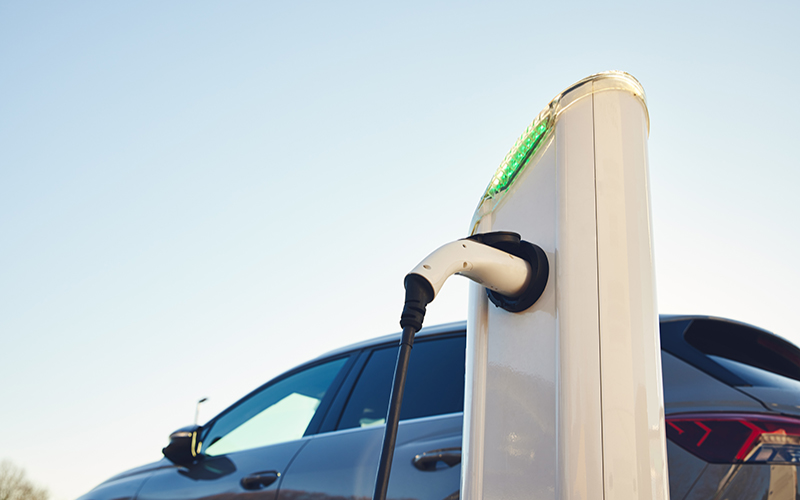In 2023, the global electric vehicle (EV) market reached a tipping point, with over 10 million units sold worldwide, according to Bloomberg Green. Central to this surge in adoption is the development of fast-charging hubs, a critical component in urban EV infrastructure. These hubs are not only making it more convenient for city dwellers to own EVs, but they’re also transforming how we think about mobility, sustainability, and the future of urban transport. In this article, we’ll explore how fast-charging hubs are reshaping our cities’ landscapes and what that means for the future of electric vehicles.
The Rise of Fast-Charging Hubs: A Game Changer for Urban EVs
The Evolution of Charging Technology
Fast-charging hubs have revolutionized the way electric vehicles are integrated into urban environments. Traditionally, EV owners relied on home charging or slow public chargers, which could take several hours to fully charge a vehicle. However, with the advent of fast-charging technology, particularly DC fast charging, the game has changed dramatically. According to InsideEVs, modern fast chargers can replenish an EV’s battery from 0 to 80% in as little as 30 minutes, making them suitable for quick stops and city driving.
- DC Fast Chargers: These chargers use direct current to rapidly charge batteries, significantly reducing wait times compared to Level 1 and Level 2 chargers.
- Enhanced Infrastructure: Companies like Tesla and Volkswagen have invested heavily in expanding their fast-charging networks, with Tesla’s Supercharger network alone laying claim to over 25,000 stations worldwide.
Impact on Urban Mobility
The introduction of fast-charging hubs is having a profound impact on urban mobility. Here’s how:
- Reduced Range Anxiety: One of the biggest barriers to EV adoption has been range anxiety, the fear of running out of charge with no available charging station nearby. Fast-charging hubs, strategically located in urban areas, alleviate this concern.
-
Increased Adoption Rates: The convenience of fast-charging has encouraged more city residents to switch to electric vehicles. According to Reuters Mobility, cities with robust charging infrastructure see higher EV adoption rates.
-
Integration with Renewable Energy: Many fast-charging hubs are now being integrated with renewable energy sources like solar panels, further reducing the carbon footprint associated with EV charging.
How to Utilize Fast-Charging Hubs Effectively
Finding the Best Locations
To make the most of fast-charging hubs, it’s essential to know where to find them. Here are some tips:
- Use Apps and Maps: Utilize apps like PlugShare and ChargePoint to locate the nearest fast-charging stations.
- Plan Ahead: If you’re planning a long trip, map out your charging stops in advance to ensure availability and compatibility with your EV model.
Charging Etiquette and Best Practices
Understanding charging etiquette can enhance your experience and benefit the EV community:
- Limit Charging Time: Since fast chargers are in high demand, try to limit your charging time to what is necessary, freeing up space for others.
- Stay Informed: Keep an eye on charging station updates and community posts to stay informed about any disruptions or new installations.
The Future of Fast-Charging Hubs in Urban Areas
Emerging Trends and Innovations
The future of fast-charging hubs is bright, with several exciting trends and innovations on the horizon:
- Ultra-Fast Charging: Companies like Rivian and Lucid Motors are developing ultra-fast chargers capable of delivering 300 miles of range in just 20 minutes, as reported by Electrek.
- Wireless Charging: Research into inductive charging technology is underway, promising a future where drivers can charge their vehicles wirelessly at select locations.
- AI-Powered Networks: Artificial intelligence is being integrated into charging networks to optimize energy use and predict maintenance needs.
The Role of Government and Policy
Governments worldwide are recognizing the importance of fast-charging infrastructure. The International Energy Agency (IEA) reports that policy support, including incentives and subsidies for infrastructure development, is crucial for continued growth.
- Incentives: Many cities offer incentives for businesses to install fast-charging stations, including tax breaks and grants.
- Regulations: There is a growing push for standardized charging connectors and payment systems to streamline the user experience.
Conclusion: Charging Towards a Sustainable Future
Fast-charging hubs are undeniably revolutionizing urban EV infrastructure. They not only facilitate the transition from fossil fuels to a cleaner, greener future but also enhance the overall viability and attractiveness of electric vehicles in cities. As these hubs become more prevalent and technologically advanced, they will play a pivotal role in achieving sustainable urban mobility. What steps are you taking to embrace this electrifying future? Whether you’re an EV owner or considering the switch, the road to a sustainable future is paved with fast-charging innovation. Keep an eye on emerging technologies, policy changes, and new installations as we charge ahead into an electrified era.

